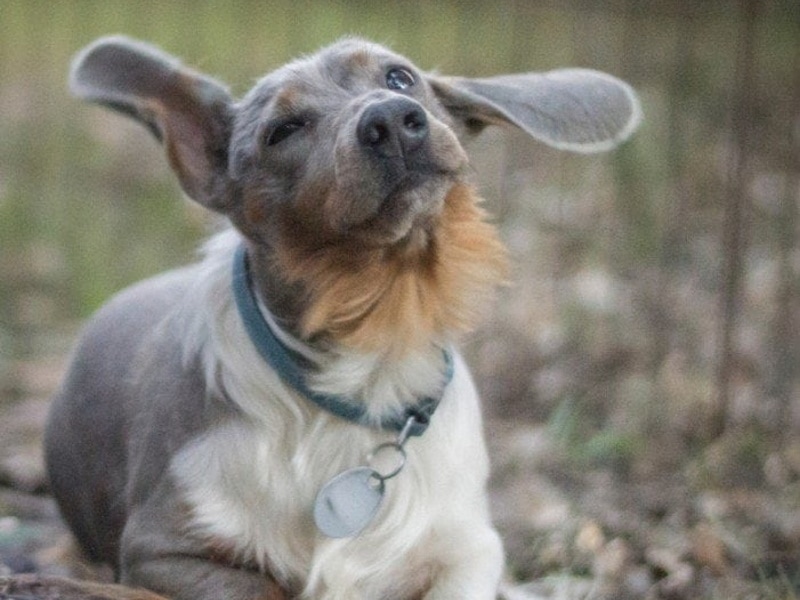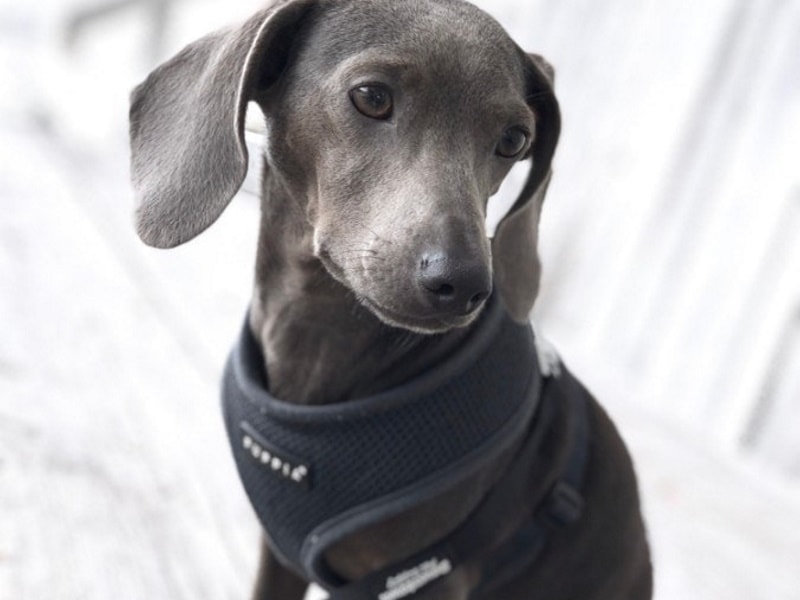Click to Skip Ahead
The blue Dachshund is a beautiful breed of dog that has a long and fascinating history. Though they are not as common as other Dachshund colors, blue Dachshunds have been around for centuries and have been prized by many famous people throughout history.
Breed Overview
Height:
14 – 19 inches (standard); 12-15 inches (miniature)
Weight:
16 – 32 pounds (standard); under 11 pounds (miniature)
Lifespan:
12 – 16 years
Colors:
Solid red, black, and tan, red and tan, merle
Suitable for:
Families with older children
Temperament:
Devoted, playful, curious
In this article, we will explore the origins and history of the blue Dachshund and look at some of the most interesting facts about this unique breed.
Dachshund Characteristics

The Earliest Records of Blue Dachshunds in History
The first recorded mention of the blue Dachshund dates back to the early 1800s in Germany. At that time, the breed was known as the “Stachelhund” or “badger dog” and was used primarily for hunting badgers and other burrowing animals. The wirehaired variety was the most common type of Dachshund at that time, and it is likely that the blue color was not as prized as it is today.
How Blue Dachshunds Gained Popularity
The blue Dachshund began to gain popularity in the late 1800s when they were introduced to England. The English were fascinated by the breed and began to breed them for both hunting and companionship. It was around this time that the smooth variety of Dachshund became more common, and the blue color began to be prized by dog fanciers.

The First Blue Dachshund in America
The first blue Dachshund to be registered in America was a smooth-coated dog named “Drummer”. He was born in 1895 and was owned by Mrs. Frank D. Mead of New York City. Drummer was the only blue Dachshund in America at that time, but he quickly gained popularity and sparked interest in the breed.
Blue Dachshunds in Competition
The blue Dachshund continued to gain popularity in the early 1900s, and they began to be shown in dog shows. The first blue Dachshund to win a major competition was a wire-haired dog named “Rolf”. He was born in 1902 and won the coveted “Best in Show” title at the Westminster Kennel Club Dog Show in 1903. This was a major victory for the breed and helped to solidify their place in the world of dog showing.
Formal Recognition of Blue Dachshunds
The blue Dachshund was officially recognized by the Kennel Club of England in 1892. At that time, the breed was known as the “Blue Badger Dog”. The Kennel Club recognized two varieties of blue Dachshund – smooth and wirehaired – but did not distinguish between them.
The Dachshund breed as a whole was recognized by the AKC in 1895 and was given the name “Dachshund”, which is German for “badger dog”. The AKC recognized three varieties of Dachshund – smooth, wirehaired, and long-haired – but did not distinguish between the colors.
The blue Dachshund was not recognized by the AKC until 1900. At that time, the breed was only recognized in two varieties, the smooth and wirehaired. The blue color was not mentioned in the AKC standard, but it was still considered to be a part of the breed.
Top 3 Unique Facts About Blue Dachshunds
1. The blue Dachshund is a relatively rare color for the breed
Blue Dachshunds are not a new color variation. Both smooth and wire-haired Dachshunds can be born in blue.
2. The blue color is caused by a recessive gene
This means that both parents must carry the gene in order for their puppies to be born blue.
3. The name Dachshund comes from German words
The German “Dachs” means “badger” and “Hund” means “hound”.


Frequently Asked Questions
Are blue Dachshunds easy to take care of?
Yes, blue Dachshunds are relatively easy to take care of. They are a low-maintenance breed and only require occasional grooming. Blue Dachshunds are also generally healthy and have a lifespan of 12-16 years.
What are some common health problems for blue Dachshunds?
Some common health problems for blue Dachshunds include intervertebral disc disease, obesity, and allergies. Blue Dachshunds are also prone to back problems, so it is important to keep them at a healthy weight and provide them with plenty of exercise.
How much exercise do blue Dachshunds need?
Blue Dachshunds are a relatively active breed and need at least 30 minutes of exercise per day. They are also known to be “escape artists”, so it is important to keep them in a secure area when they are not supervised.
What is the average lifespan of a blue Dachshund?
The average lifespan of a blue Dachshund is 12-16 years.
Do blue Dachshunds shed?
Yes, all Dachshunds shed, but the amount can vary depending on the individual dog and their coat type. Wirehaired Dachshunds typically shed less than smooth-coated Dachshunds.
Are blue Dachshunds hypoallergenic?
No, blue Dachshunds are not hypoallergenic. However, they are considered to be a “low-shedding” breed, which means that they shed less than most other dogs.
What is the average price of a blue Dachshund?
The average price of a blue Dachshund is $500-$1,200.
Do Blue Dachshunds Make Good Pets?
Today, blue Dachshunds are prized as both companion animals and show dogs. They are intelligent, playful, and devoted to their families. Blue Dachshunds make great pets for people of all ages and lifestyles. If you are considering adding a blue Dachshund to your family, be sure to do your research and find a reputable breeder.


Closing Thoughts
The blue Dachshund is a unique and fascinating dog breed. They have a rich history dating back to the early 1800s, and they have gained popularity in recent years as both companion animals and show dogs. If you are considering adding a blue Dachshund to your family, be sure to do your research and find a reputable breeder.
Featured Image Credit: Leeron Cohen, Shutterstock











